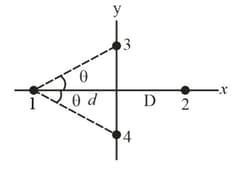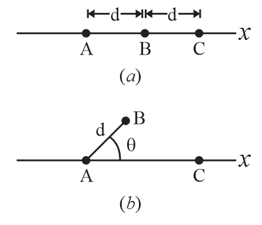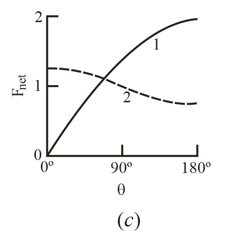The figure shows an arrangement of four charged particles, with angle and distance . Particle has charge , particles and have charges .
What is distance between the origin and particle if the net electrostatic force on particle due to the other particles is zero?
If particles and were moved closer to the -axis but maintained their symmetry about that axis, would the required value of be greater than, less than, or the same as in part ?

What is distance between the origin and particle if the net electrostatic force on particle due to the other particles is zero?


Important Questions on Coulomb's Law
In the given figure, three charged particles lie on an -axis. Particles and are fixed in place. Particle is free to move, but the net electrostatic force on it from particles and happens to be zero. If what is the ratio ?

Figure (a) shows an arrangement of three charged particles separated by distance . Particles and are fixed on the -axis but particle can be moved along a circle centered on particle . During the movement, a radial line between and makes an angle relative to the positive direction of the -axis figure b). The curves in figure (c) give, for two situations, the magnitude of the net electrostatic force on particle due to the other particles. That net force is given as a function of angle and as a multiple of a basic amount . For example, on curve at , we see that . For the situation corresponding to curve, what is the ratio of the charge of particle to that of particle (including sign)? For the situation corresponding to curve , what is that ratio?


